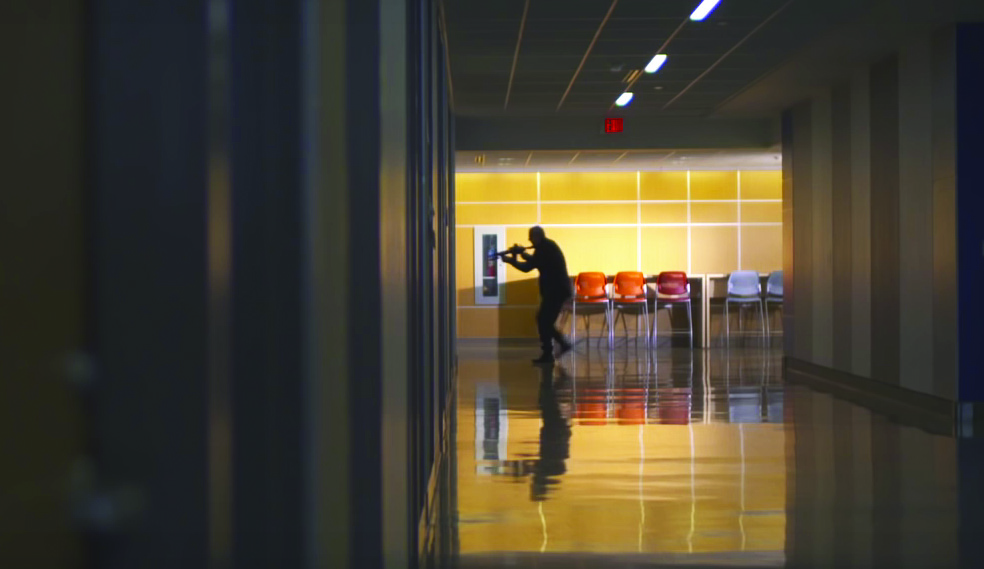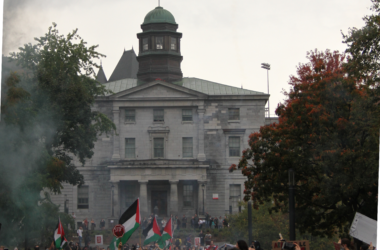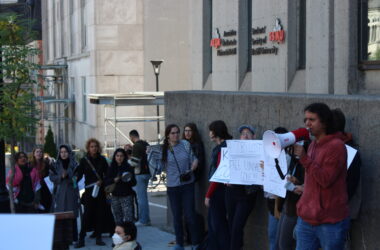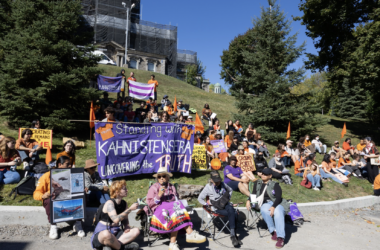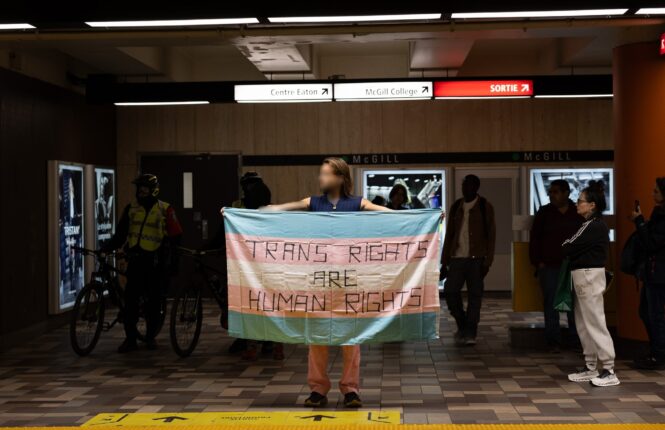On Sept. 8, McGill University’s Campus Public Safety Department notified faculty members of the official release of a new training video intended to inform members of the McGill community of safety procedures in the event of a campus shooting. According to Pierre Barbarie, director of Campus Public Safety, the short was made to replace the US Department of Homeland Security video previously featured on McGill University’s website, which ran over an hour in length. The 12-minute film has been adapted from footage produced by the University of Alberta. The goal is to present a more condensed film, containing the same information that would also resonate with a Canadian audience.
“It’s a safety message,” Barbarie said. “The more people see it, the better. Our goal is to give tools for dealing with this kind of crisis. We’re creatures of habit. We’ll leave from the same door or escalator, so knowing your surroundings is key.”
While screening the video in class is not mandatory, professors were urged to promote the film to students and stress the importance of knowing emergency protocol. The recording was initially uploaded to McGill’s YouTube channel in July, but has yet to be uploaded to the McGill website.
The video emphasizes knowing one’s environment, staying out of the shooter’s line of fire, and attacking as a last resort.
“The ideal situation isn’t to fight,” Barbarie said. “If you can’t hide out and the shooter, unfortunately, confronts you […] it might come to that. Now, do you accept that he’s in front of you? Do you react? That’s really your decision to make. We just want people to realize their options.”
Deputy Provost (Student Life and Learning) Ollivier Dyens acknowledged that the video’s realistic portrayal of a school shooting may disturb viewers. Dyens explains that although informing the McGill community of security measures is a priority, students are often swamped with messages at the beginning of the school year and are therefore less attentive to the content of emails.
“It’s a difficult thing to watch and we take it seriously,” Dyens said. “We can’t send out too many emails on that subject. Once the students were back on campus, we sent it to the Deans, who then forwarded it to the chairs to ensure that faculty members would actually read it. If something happens, we believe students will turn to [them] to know what to do.”
In an email to The Tribune, Erin Sobat, Vice-President University Affairs for the Students’ Society of McGill University (SSMU), explains that it was not involved with the creation or circulation of the video.
"SSMU doesn't have a formal position on the video and we were not consulted on the creation or communications plan," Sobat wrote.
Regarding the resources and time devoted to the new film, Sobat voiced concern over the way that university funds are distributed.
"We do wonder if this is really the biggest priority in terms of resource allocation,” Sobat wrote. “Statistically, more students will have to deal with anxiety issues or depression at McGill than an active shooter situation, yet we have not seen the same level of communications on how students and professors can address those pressing concerns."
Currently, McGill offers free 30-minute active shooter training workshops, where students and staff members get answers to case-by-case questions. Despite the fact that presentations have taken place since 2009, the turnout has been underwhelming.
“It’s always difficult to get people to the workshops,” Barbarie said.
Alexandre Beaubien, U1 Science, was unaware of the sessions, but expressed that it is in students’ best interest to attend, even after watching the training video.
“I did not know such workshops existed!” Beaubien said. “I think it would be important for people to participate in those activities mainly because the knowledge you gain from the security team isn't only about what to do in an active shooter scenario, but how to react in any emergency scenario [in real life]. Knowing how to react could not only help you, but also help others in certain circumstances.”
